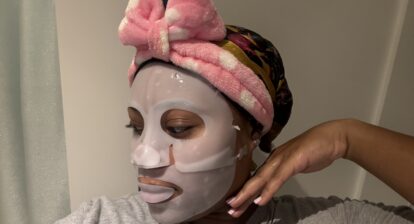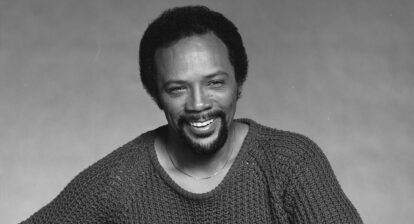
Guess Who’s Coming to Dinner wasn’t just a movie—it was a mirror, reflecting the tension between love and the boundaries society dares us not to cross. That movie became an exposition on interracial dating and showed us that it is always more than a personal choice—a collision of love, history and power. It challenges societal boundaries and reveals how politics, identity and culture shape some of our closest connections. The film’s dinner table conversation—tense, raw and uncomfortably honest—still resonates, reminding us that love does not exist in a vacuum; it exists in a world weighed down by prejudice, power and perception.
As a Black American from the South, my reflections are not abstract; they are lived. My decision to marry a Black woman was about more than love—it was a declaration of cultural alignment and resistance against erasure. I know what it means to be seated at tables where love is questioned and identity becomes a political statement, so I empathize with those whose choices differ from mine. In a time where division is political currency, interracial relationships still face scrutiny once dramatized on screen—except now, the stakes feel even higher, and the judgment more public.
But if Guess Who’s Coming to Dinner taught us anything, love, rooted in conviction, will constantly challenge the limits of societal acceptance. Back then, it was about daring to love beyond race. Today, it is about daring to love while confronting the forces that try to erase identity, dilute culture or reduce commitment to a political debate. My choice, my marriage, is personal and political—a love story and a resistance story. And for those who choose to date beyond their racial and ethnic identity, it should have the freedom of the same tone.
Cultural Lessons and Generational Knowledge
While many have become more socially accepting of interracial dating, I cannot deny the perspectives that raised me. The warnings from elders often carried the wisdom of survival. My mother’s admonition—”Don’t you bring a white girl to my house”—was not about hatred but protection, a shield from a world where interracial love was once criminalized and punished. A 2022 Murray State report highlights that Black love has long been an act of defiance—asserting that Blackness is not only whole but sacred. And that reality of defiance of societal norms can be doubly true for those in interracial partnerships.
Ashley O’Day, a wife and mother in an interracial marriage, said, “The most rewarding part [of being in an interracial marriage] is being fully seen by my spouse. But the most challenging is explaining the struggles Black people face daily.” Love across racial differences requires more than affection; it demands labor—of listening, confronting privilege and unlearning assumptions.
Cultural norms, traditions and family expectations often compound this complexity. Interracial couples face the challenge of honoring both their individual and collective cultural heritages without losing their distinct identities. The labor extends to bridging worlds: attending family gatherings where differences in race and culture surface through unspoken tensions or confrontation.
Moreover, generational trauma often shapes the lens through which interracial relationships are viewed. For Black families, the warnings against crossing racial boundaries were usually about safety—both physical and emotional. Navigating these layered histories requires patience and empathy, recognizing that, while personal, love is never free from social and historical context.
The Battleground of Love in a Political Arena
In Trump’s America, love is entangled with politics. The ACLU warns that the rollback of Roe v. Wade could open the door to challenges against Loving v. Virginia, the ruling that legalized interracial marriage. This signals a truth: rights, like relationships, are never safe from political assault.
I had the chance to speak to a close friend of mine (a white-identifying man who dates outside his race but prefers to remain anonymous) about his experience in interracial relationships. “Anyone dating a person of color might worry how they’ll be treated. Certain language from leaders enables hate, making it feel louder and more present,” he observed. His words remind us that political rhetoric emboldens hostility, making public spaces riskier for interracial couples.
The political climate also forces couples to confront how their relationship is perceived through a racialized lens. Policies that target marginalized communities often hit close to home—whether through conversations about police brutality, immigration laws or education disparities. Love becomes a space where the personal and political collide. The labor of love, in this arena, is about solidarity—showing up for one another not just as partners, but as allies in a shared struggle against injustice.
The Media Mirage of Interracial Partnerships: Progress or Palatability?
Author bell hooks reminds us, “Since anti-racist individuals did not control mass media, the media became the primary tool used to convince Black viewers, and everyone else, of Black inferiority.” Media loves the optics of interracial couples but reduces them to symbols of a ‘post-racial’ ideal, erasing their struggles. That’s not fair. A 2024 Phys.org report notes that ads featuring interracial families often spark applause and outrage—proof that society remains uneasy with what such relationships represent.
Yet, the curated depictions mask the lived reality—microaggressions, assumptions and the strain of constantly educating others. The lack of diverse storytelling in media also erases the range of interracial experiences. Stories are often white-centered, depicting interracial relationships primarily as white/non-white pairings, ignoring the complexities within relationships between people of color. This narrow lens flattens experiences, furthering the stereotype that interracial love exists solely to resolve racial tension rather than explore the depth of connection.
Additionally, media portrayals often commodify Blackness within interracial relationships. Black partners are depicted as the source of culture, strength or style but rarely as fully complex individuals with their own desires and flaws. This performative representation fuels harmful narratives rather than honoring the full humanity of both partners. And sadly, it becomes a media blueprint for public discourse in politics and beyond.
Interracial Love: Real, Intentional and Honest
Interracial love is just as powerful and necessary when rooted in honesty and intentionality. It is not a negation of cultural pride but an expansion of understanding, blending experiences that can be both beautiful and challenging. O’Day reflects, “We navigate these conversations with personal experiences. Sharing even painful stories helps us strip away biases and truly know each other.” Her words highlight that interracial love requires transparency, empathy and the willingness to confront discomfort for the sake of a deeper connection.
The anonymous gentleman adds, “It’s important to talk about race and identity early and often. Understanding your partner’s lens on politics, family and culture helps build a relationship based on respect and awareness.” His perspective underscores that interracial love demands a commitment to ongoing, raw and honest dialogue because understanding emerges through shared experiences and open hearts.
What This Means in Trump’s America
Today, interracial love stands as both a personal connection and a political act. It is a deliberate choice to bridge histories often marked by oppression and privilege, a commitment to confront the uncomfortable truths that come with blending identities in a nation still grappling with its legacy of racism. True interracial love is not about optics or performance but about intention—holding space for differences, embracing cultural complexities and building something stronger because of them. It recognizes that while love can transcend race, it must never ignore it. Instead, it engages race with honesty, humility and a relentless pursuit of understanding—not just of each other but of the societal structures that shape our lived experiences.
In this era, where racial divisions are often stoked for political gain, interracial couples face challenges that echo a painful past—one where love across racial lines was not only taboo but illegal. The rise in attacks on marginalized communities and the emboldening of racist rhetoric can feel like a direct threat to their union, a regression to times many hoped were left behind. Yet, amidst these challenges, they must hold fast to one another, understanding that the acceptance and beauty found in interracial love does not diminish the beauty of Black love. Both can and should coexist, each equally sacred and valid.
To navigate this path, interracial couples must be intentional in celebrating their individual cultures while acknowledging the shared struggle their partnership inherently faces. It is a journey that demands strength, grace and resilience. James Baldwin leaves us with the central truth: “Love takes off the masks that we fear we cannot live without and know we cannot live within.”
In Trump’s America, to love across lines of race, culture and identity is a radical act of resistance. It is a refusal to be bound by the divisions that seek to keep us apart. It is a reminder that the most profound expressions of love are not merely spoken but lived—daily, intentionally and courageously—beyond fear, beyond performance and beyond borders.




